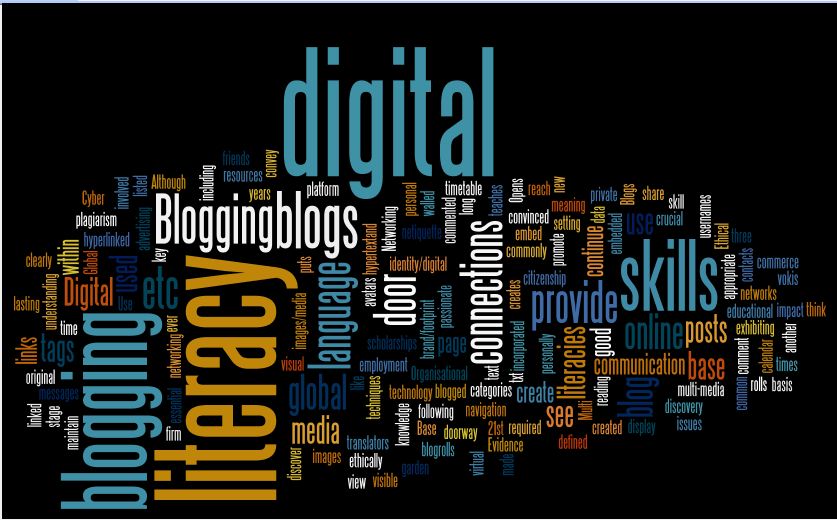Having blogged for more than three years, I am as passionate about blogging as ever and see it as one of the few online tools that can embrace the both the emerging and establishing digital literacies. Over this time, I am convinced that blogging is the “door” to digital literacy. Digital literacy is defined as “the skills, knowledge and understanding required to use new technology and media to create and share meaning”. It is a true 21st century language.
Although there are times when it could be argued that blogging should be a private space or kept within a ‘walled garden’ of the classroom, blogging should also be ‘out there’ for a global audience to reach. This has been written for an educational setting, but is equally true for all those people who wish to survive and excel in the 21st century.
Blogging is a crucial 21st literacy skill. Why? In the following, I have listed what I personally see as some of the key digital literacy skills and how good blogging can display these skills.
- It creates a personal identity/digital brand/footprint. Blogging puts on view, who we are, what we have been involved in, how we think, what we like, our skills, what we have created, it is our online advertising etc . Opens the door to employment, scholarships, networks etc
- Digital text literacy can clearly be used:- hypertextand hyperlinked language should be visible in blog posts. Using blogs and reading blogs teaches important digital navigation techniques.
- Ethical issues: Cyber safety, plagiarism, digital citizenship, digital commerce, netiquette, reuse ethically are all skills that should be taught, or could be incorporated into blogging. Evidence of avatars, vokis, appropriate usernames, language, original images/media etc
- Base for digital connections – blogs provide the base for virtual contacts to discover, maintain communication, provide base for discovery and continue connections over a long term basis. They are essential when, in an educational setting, firm and lasting connections are to be made with another/other global classroom(s).
- Multi- literacies – Blogs can provide a ‘doorway’ or platform for exhibiting digital media including images, visual data, animations, podcasts, digital movies, music, digital storytelling, podcasting, screen casting. These can be embedded within a post or page or linked to.
- Networking literacy – impact of networking, making friends, what does it mean to comment and be commented on, blog rolls , how to promote blogs and posts etc
- Organisational literacy: Use of tags, categories, blogrolls, #tags, links to commonly used resources, timetable page, embed online calendar
- Global literacies: use of translators, common txt language, multi-media to convey messages etc
- Authenticity – Spam/phish detection in regard to comments and links
- Communication literacy: – blog can and should show evidence of other forms of communication eg video conferencing, global, immersive environments
- Empowerment – empower our students to work on a constructive online presence, give them a positive use of the internet, empower self confidence to overcome any form of cyber bullying.
It is vital to have a good, online presence where others can connect to, communicate and create with, and continue an ongoing, readily contactable network. Blogging provides all this and more! Digital literacies must be taught – let’s blog!
What do you think? What are the key digital literacies? What further digital literacies are there? How does blogging support them?


What a fantastic article! I think I’ll be borrowing the phrase “blogging is the door to digital literacies”.
Even though my students are only in Grade Two, I think their digital literacy skills are very advanced all because of blogging.
I love the way you can use blogs as a showcase for Web 2.0 tools – having an audience is everything and I agree that blogs should be open to a global audience.
Being in a position where I am teaching other teachers about Web 2.0 tools, I find that the value of using these tools is a lot less when there is nowhere (no blog) to publish or embed results!
I’ve always said that the biggest benefit of blogging in my own classroom has been the communications and collaboration we have embarked on with people around the world. The rich learning interactions we can have through blogging are absolutely priceless!
Thanks again for a great article,
Kathleen
That is a great tip particularly to those new to the blogosphere.
Brief but very precise info… Thanks for sharing this one.
A must read article!